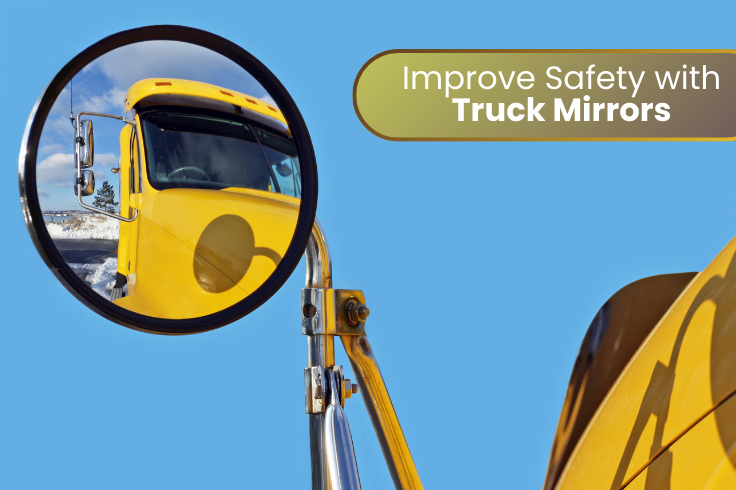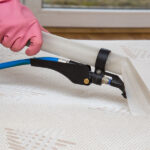Mirrors are essential for truck drivers to operate safely and efficiently. Yet compliance alone doesn’t cover the realities of day-to-day hauls, which is why many fleets invest in truck mirror upgrades. Standard fittings rarely suit the mix of long-distance routes, depot access points, and regional weather conditions across Australia. A long-haul driver may benefit from wider units for overtaking, while urban fleets prefer compact mirrors that reduce blind spots in heavy traffic.
Vibration, grit, and the occasional scrape against a loading dock or gatepost wear mirrors down faster than most fittings. As a result, frequent mirror replacement is common across the logistics industry. Grouped with lighting kits and other add-ons, spare parts dealers stock them as truck mirror accessories, so they can be replaced immediately rather than waiting until scheduled servicing.
How truck mirror accessories improve safety
Larger housings or secondary mirrors provide drivers with a wider view that standard fittings often miss. The safety benefits of upgrading mirrors are most noticeable in conditions that demand quick judgment, such as:
- merging into heavy traffic
- reversing into a narrow bay
- holding position in strong crosswinds
With fewer blind spots to manage, drivers can stay focused on the road ahead rather than second-guessing what they cannot see. For operators, this extra visibility helps prevent avoidable accidents and keeps vehicles on the road instead of in the workshop for costly repairs.
A practical example on the road
Consider a truck travelling daily between Sydney and Newcastle. Highway stretches demand long-distance visibility, while inner-city deliveries require constant awareness of cyclists and smaller vehicles. Standard flat mirrors often leave blind spots in these conditions. Adding a convex passenger-side mirror widens the view, enables smoother lane changes, and reduces the risk of side contact in city traffic. This is a small upgrade with measurable benefits for safety and efficiency.
Signs a replacement is needed
Not every issue with mirrors is as obvious as shattered glass. Subtler signs of wear reduce reliability over time. Persistent rattling during long drives, heating elements that no longer clear condensation, or arms that slip out of position under vibration all signal it is time for replacement. If these problems are ignored, drivers face reduced visibility in critical moments—particularly during night shifts, poor weather, or congested conditions. That increases accident risk and can leave vehicles non-compliant during safety inspections. At this point, contacting a trusted spare parts dealer who stocks truck mirror accessories ensures drivers maintain clear vision and compliance with road safety standards.
Key features to look for
When choosing replacements or upgrades, it pays to match features with the demands of your routes.
- Flat mirrors provide a sharp, accurate reflection but cover a limited range.
- Convex mirrors expand the field of view, especially helpful for overtaking and reversing.
- Heated mirrors prevent condensation or frost build-up in cold or damp conditions.
- Powered adjustments allow flexible positioning, particularly useful in multi-driver fleets.
Each of these features directly affects how smoothly and safely a truck can be driven through fog, dense traffic, or long hours on the highway.
Matching mirrors to your fleet
No two fleets operate under identical conditions. Regional hauls often require large heated mirrors that handle early-morning fog and unpredictable weather. City-based fleets benefit more from compact convex units that minimise blind spots when manoeuvring in tight bays or congested streets.
Upgrades also support driver comfort and efficiency. Clearer visibility reduces fatigue because drivers spend less time straining to check blind spots. In some cases, improved aerodynamics from newer mirror designs can even contribute to better fuel efficiency across a fleet. Reviewing the mirrors currently fitted helps identify where safety, comfort, and operating costs can all be improved at the same time. Even small adjustments—such as adding a secondary spot mirror, upgrading to heated glass, or replacing a worn housing—can make a noticeable difference.
Why upgrades matter for compliance and cost
Australian road regulations require trucks to maintain clear visibility at all times, and faulty mirrors can quickly put vehicles out of compliance. Beyond the legal risk, poorly performing mirrors increase the likelihood of collisions, which means downtime, higher repair costs, and potential insurance complications. By investing in mirror upgrades before issues become critical, operators avoid unplanned disruptions and demonstrate a commitment to safety standards.
Final thoughts
Mirror upgrades are not only about meeting regulations, they are about giving drivers the best possible tools to stay safe and confident behind the wheel. The right combination of truck mirror accessories reduces blind spots, adapts to challenging weather, and extends the lifespan of essential fittings.
For long-haul operators and city fleets alike, reviewing current equipment and making strategic upgrades can improve safety, lower costs, and keep trucks moving. Speak with your spare parts dealer about the truck mirror options they stock, and choose upgrades that provide lasting visibility and protection for your drivers.












